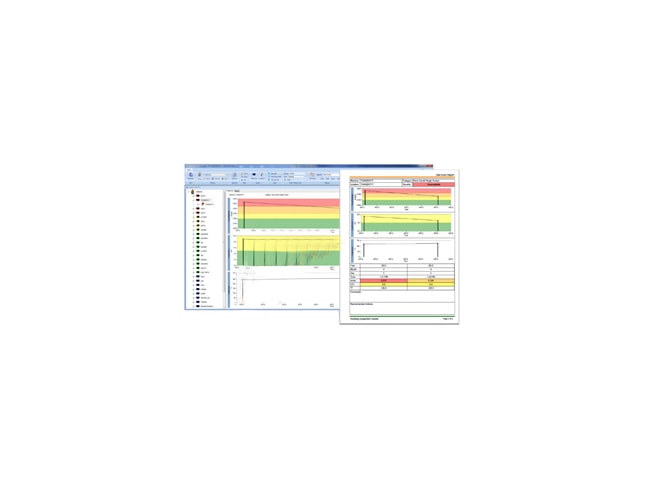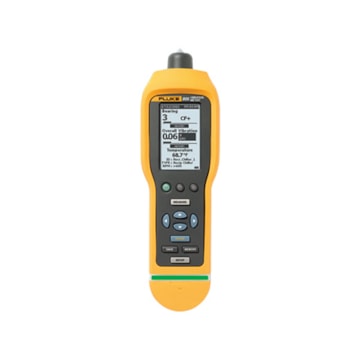
Skip to Main Content
Fox River Systems Explorer 805 Professional Software
Unlock the Potential of Fluke 805 & 805FC Vibration Meters.

$1,595.00
Part Number
- 805E-PROFESSIONAL
Manufactured
Includes
Availability
Overview
Features
- Defines and manages the machine measurement definitions for in-scope equipment
- Manages a large number of machines at multiple sites
- Indicates which equipment assets have problems after measurements have been made
- Creates actionable, insightful reports
- Creates and edits Setup files on your PC for upload to a Fluke 805 meter
- Measurement data shown either as trend graphs or in tabular form
- Create and edit Databases as centralized repositories of measurement data for a collection of machines
- Users can back up and reload a Fluke 805 machine names and measurement locations
- Saves measurement data from a Fluke 805 to a data file on a PC
- Protection and recoverability of Machine/Location Data Files as well as measurement data
- Web based training to acquaint new users with the functionality of Explorer 805
This product is an accessory for the following products:
Description
Fox River Systems' Explorer 805 software enables Fluke 805 Vibration Meters to be used in support of small to large scale vibration screening programs for rotating equipment assets. Explorer 805 was created to address capabilities required by in-house maintenance personnel and service provider organizations with hundreds to thousands of assets under management across one or more sites.
Explorer 805 unlocks the potential of the Fluke Vibration Meters by enabling:
- Rapid Configuration of Fluke 805 Vibration Meters.Explorer 805 feature a Setups Editor which eliminates the need for manual entry of machine names, measurement locations, and machine types into Fluke 805 Vibration Meters. The Setups Editor incorporates time saving features like copy and paste to accelerate creation of setups for all of your equipment. Explorer 805 can be used to reload a Fluke Vibration Meter that experiences memory loss.
- Measurement and Trend Reporting.Explorer 805 Professional Edition includes the ability to generate reports that are actionable, easy to understand, and focused on the assets that meet your custom filtering criteria. Standard reports are included with the software to serve as a starting point for customization of reports to meet your needs. For example, a standard "Bad Actors" report includes only those machines that exhibit overall vibration levels or Crest Factor+ ratings that are SEVERE or EXTREME. Reports can be tailored to include trend graphs or measurement data tables and customized report titles and logos. The machine assets that appear in a report can be tailored using a custom filter that specifies which machine types and severity levels are to be included. The sequence that machine assets appear in a report is controlled by a sort order specification with the following options: Severity (most severe to least sever), Machine Name (alphabetical), Machine Category (numeric machine categories as specified by Fluke), or by Route Sequence (default route sequence is the order machines were added to the database).
- Measurement Routes, along with the database capabilities of the Professional Edition, enable scaling your vibration testing program across multiple sites and a virtually unlimited number of machine assets. Databases and routes are used to segregate and help you manage groups of equipment when you have multiple sites, multiple customers, or large number of equipment assets in the scope of your vibration screening program. Measurement routes represent an ordered list of machine assets that a technician can be assigned to make measurements on.
- Data Protection: Backup & Recovery of Setup files is possible with Explorer 805. And backup and recovery of measurement history is only possible with the database functionality that is built into the Professional Edition. In the Professional Edition, the memory of the Fluke 805 or 805FC meter only stores a measurement route (collection of assets to make measurements on) and the most recent measurements made on assets in the route. Once the Fluke Vibration Meter is attached to a PC running Explorer 805 Professional Edition, measurement data is copied from the meter and added to a database which contains the measurement history.
Need Help? Call a Temperature engineer at 1-800-884-4967
We're open Mo-Th 8am to 5:30pm. Fr 8am to 5pm ET







